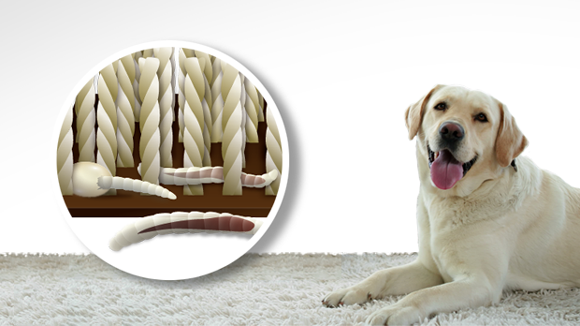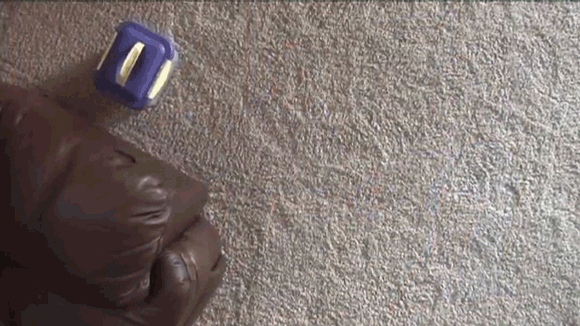
Img 1 83% of fleas develop in carpet fibers, concentrated in areas where pets rest. Carpeting protects larvae from insecticide penetration and keeps the climate regulated.
Summary
Flea larvae live in dark microhabitats where humidity is high, temperature is moderate, and food is abundant. In homes, 83% of fleas develop in carpets. Most are found in rooms where pets often rest. Flea larvae may also live in places like pet bedding, floorboard cracks, upholstered furniture, and dog houses.
Details
Habitat Requirements of Flea Larvae
Viable habitats for larvae aren’t widespread. Flea eggs must fall onto substrates with specific characteristics to hatch and continue maturing. Suitable sites are limited both indoors and outdoors. Only a small percentage of eggs ultimately reach adulthood. Infestations continue due to the high fecundity of fleas.
Relative Humidity
The larval stage is most vulnerable to low humidity. Exposure to dry conditions quickly leads to desiccation. Larvae can only survive in areas with a relative humidity (RH) between 50-95%. The ideal RH occurs between 75-92%. Though, in one study, the low-end extreme was 60% RH, and above 80% RH was optimal.
Flea larvae can actively uptake water from the air in greater than 75% RH. Larvae living in a higher RH develop into larger, healthier adults. However, at 95-100% RH, fungi begins growing and the larvae can’t survive Fig 1.
Fig 1 Percent of flea larvae that survive (y-axis) at different increments of relative humidity (x-axis) while ambient temperature is held constant at 90°F.
Larvae can live in dry air, as low as 12% RH, as long as their substrate is moist (1-20% soil moisture). However, they’ll die if the soil is too saturated.
Ambient Temperature
Ambient temperature also significantly influences survival. Larvae will die when continually exposed to temperatures below 55.4°F (13°C) or above 95°F (35°C) Fig 2. Between 80.6°F and 89.6°F (27°C and 32°C) is ideal. In one study, the low-end extreme occurred at 59°F (15°C) and the optimum was between 77°F and 86°F (25°C and 30°C).

Fig 2 Environmental conditions required for flea larvae to survive, and days it takes the larvae to fully develop from egg to cocoon.
Darkness
Flea larvae require dark environments. They’ll quickly die in open, sun-exposed areas due to the heat and low RH. Larvae actively avoid sunlight, moving toward shaded areas or burrowing beneath the surface where light can’t penetrate. They’ll even bury in sand to escape light.
Food
Cat flea larvae are free-living (non-parasitic). They’ll graze for food in their environment. They can’t detect food, and thus exhibit undirected, random foraging. Their main source of nutrition is the dried feces of adult fleas. However, larvae will also cannibalistically feed on eggs and younger larvae. They don’t feed on host-related organic debris as was once believed.
Microhabitats & Microclimates
Flea larvae develop in dark, protected microhabitats. These environments have their own stable microclimates, where humidity and temperature are maintained at moderate levels. Since larvae in their own sheltered climate, surrounding conditions are of little importance.
Larval Movement
How Larvae Move
Flea larvae are quite mobile considering their physical form. The “baby fleas” don’t posses legs, feet, or other appendages. To move, larvae squeeze and relax their skin muscle tube on a dry surface.
Distances Larvae Travel
In a carpet study, 78% of flea larvae moved less than 15 cm after hatching from eggs. Though, some traveled up to 46 cm. A similar study found 85% of larvae, from egg to cocoon, stayed within 20 centimeters. Second instars travel further than first instars, as evidenced by shed casings. However, no larval stage moves far from the point of eclosion.
Seeking Food
Movement is strongly influenced by the presence of food. If larvae hatch in areas without food, they’ll migrate to prevent starvation. When food is present, 73% of larvae stay within 16 cm. However, when food is absent, 50% will travel more than 90 cm to find it. They’ll die within three days without food.
Reaction to Stimuli
Flea larvae respond to certain stimuli. They’re negatively phototactic, meaning they orient themselves away from source of light. They’re positively geotactic, moving downwards in the direction of gravity. They’re positively hygrotactic, being attracted to areas of high humidity. Lastly, they’re thigmotactic, recognizing and responding to physical contact. They avoid areas with pedestrian and pet traffic.
Where Larvae Live
Since larvae don’t travel far, they’ll remain concentrated in areas where eggs fall. And this is governed by movement and grooming habits of hosts. Fleas lay eggs on the host, but they fall off within a few hours. Eggs continuously fall from the infested animal, but they aren’t evenly distributed. They accumulate in areas where pets habitually rest. 40-50% of flea larvae live where pets spend 90% of their time. The remaining eggs get dispersed anywhere the host can access.
In Homes
Flea larvae are most likely to live in protected environments, primarily under the carpet canopy. They can also be found in cracks and crevices of hardwood floors. They’re unlikely to live on tiled floors, and even less so on linoleum floors. Other common places to find larvae include pet bedding, rugs, dirt-floor basements, cushions and upholstery, and under furniture.
Carpeting
83% of fleas develop deep within carpeting. The deep pile of modern carpets block out desiccating air flow and sunlight, thus providing a good harborage for larvae. Some carpets are designed to allow dirt particles to fall to the base so they’re hidden from view. These carpets easily accumulate food for the larvae.
Flea larvae instinctively burrow deep down into carpet fibers to avoid sunlight. At the carpet’s base, fluctuations in relative humidity and ambient temperature are moderated. The carpet canopy also provides protection from insecticide penetration and mechanical damage (e.g. vacuum removal and footsteps).

Img 2 The most common place to find cat flea larvae in homes is at the base of carpeting.
Organic debris in carpets plays a beneficial role for larvae. It keeps them hidden and safe in their habitat. When larvae detect disturbances, they’ll flip around and coil their bodies. Their bristled bodies work in conjunction with this behavior, making it difficult to remove the larvae from carpeting, even with a vacuum.
Hot-Spot Rooms
Immature fleas aren’t evenly distributed inhomes. They tend to be concentrated in bedrooms, living rooms, and other carpeted rooms where pets often rest. Large numbers of eggs will fall when the animal moves after resting for a long period of time, especially when jumping off furniture and onto the ground. Additionally, dogs and cats shake and groom themselves most frequently in rest areas. In family rooms, most larvae live near pet bedding and furniture. In bedrooms, hot-spots occur where pets often sleep around the owner’s bed.
Hallways that get a lot of traffic are poor locations for developing larvae. Eggs rarely even hatch in high traffic areas. It’s also rare to find larvae in carpeted areas which get a lot of sun exposure.
In Yards
Outdoor Habitats are Rare
Viable outdoor habitats for larvae are rare. In one survey, fleas were only found outdoors in 2 of 45 flea-infested residences. Habitats must have high humidity, shade, and wind protection. Larvae can’t survive in open areas exposed to the sun. Even areas under trees, or in grass, aren’t sufficient due the low RH. Outdoor survival is highest in early fall, and lowest in late winter.
Flea larvae can only survive where both eggs and flea dirt (larval food) drop. Both fall from hosts in places where they groom and sleep. Flea bites plays a significant role in this, as they cause irritation and scratching, which dislodges eggs and flea dirt. Eggs dropped from foraging animals won’t survive, because they traverse large ranges. Thus, eggs rarely fall along with fecal blood, and the larvae starve upon hatching.
Larvae can’t survive in areas with heavy rainfall, sprinklers, or poor drainage. They’ll drown. The water also dissolves and washes away flea dirt.
Dense Vegetation
In yards, flea larvae usually live under dense mats of ground cover or shrubs. Relative humidity must be greater than 45% at all times. Larvae hide under organic debris, such as grass, branches, leaves, or soil. But they remain in the upper few millimeters of soil. If soil moisture exceeds 7%, they’ll begin moving to the surface. If soil moisture exceeds 20%, the larvae begin drowning.
Other Locations
Other outdoor habitats may include dog houses, pet shelters, flower beds, crawl spaces, under structures (e.g. mobile homes), vegetation surrounding buildings, wild animal burrows, and where pets rest in the shade. Though, in hot climates, flea larvae will die in structures that trap heat (e.g. dog houses).
Do Flea Larvae Live on Pets?
In rare circumstances, flea eggs may become lodged in a pet’s fur. This is especially true when dogs or cats have thick and soiled haircoats. If the eggs survive long enough, larvae may hatch on an animal. However, flea larvae are scavengers, not parasites, so they won’t bite or suck a host’s blood.




You must log in to post a comment. Log in now.